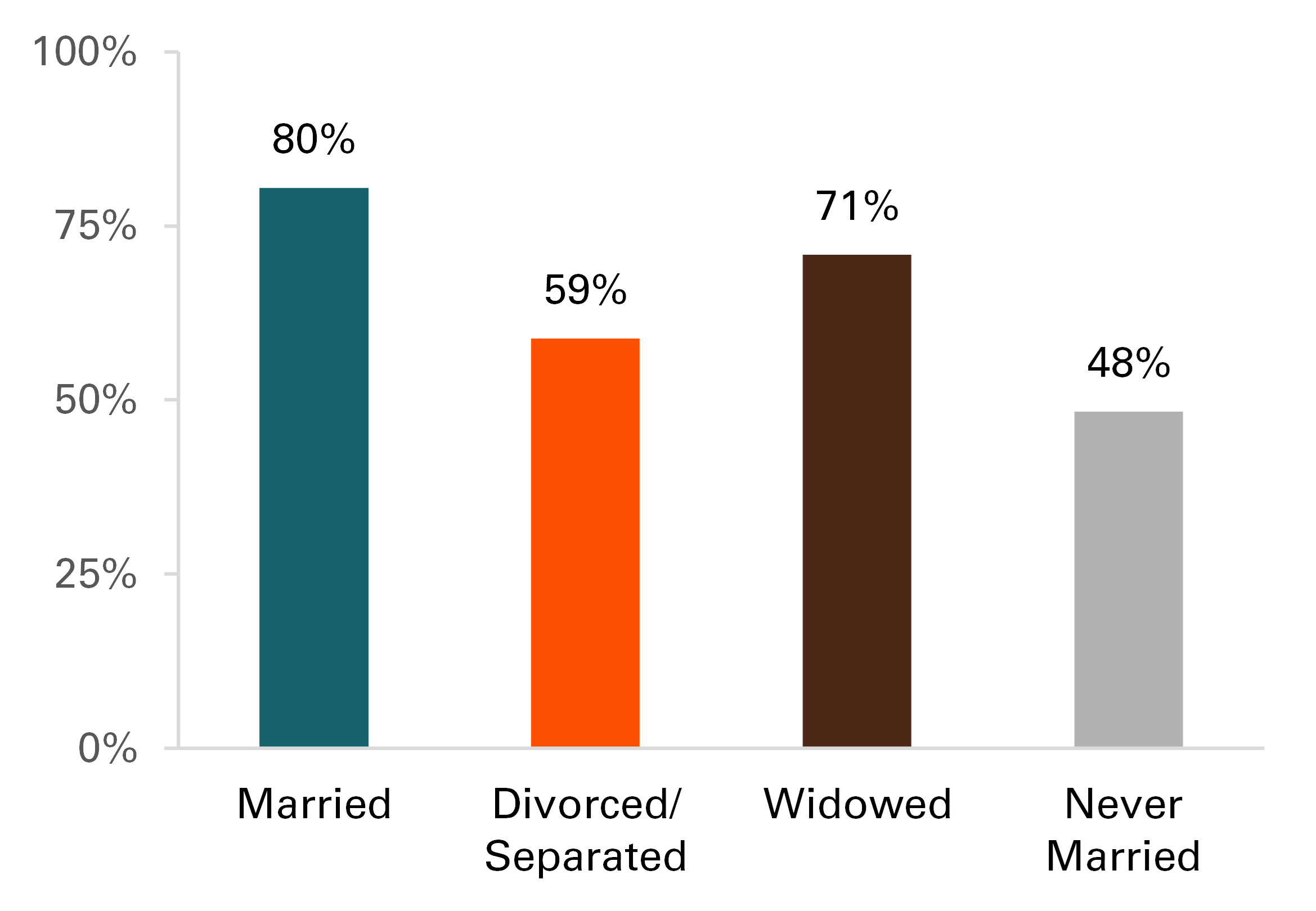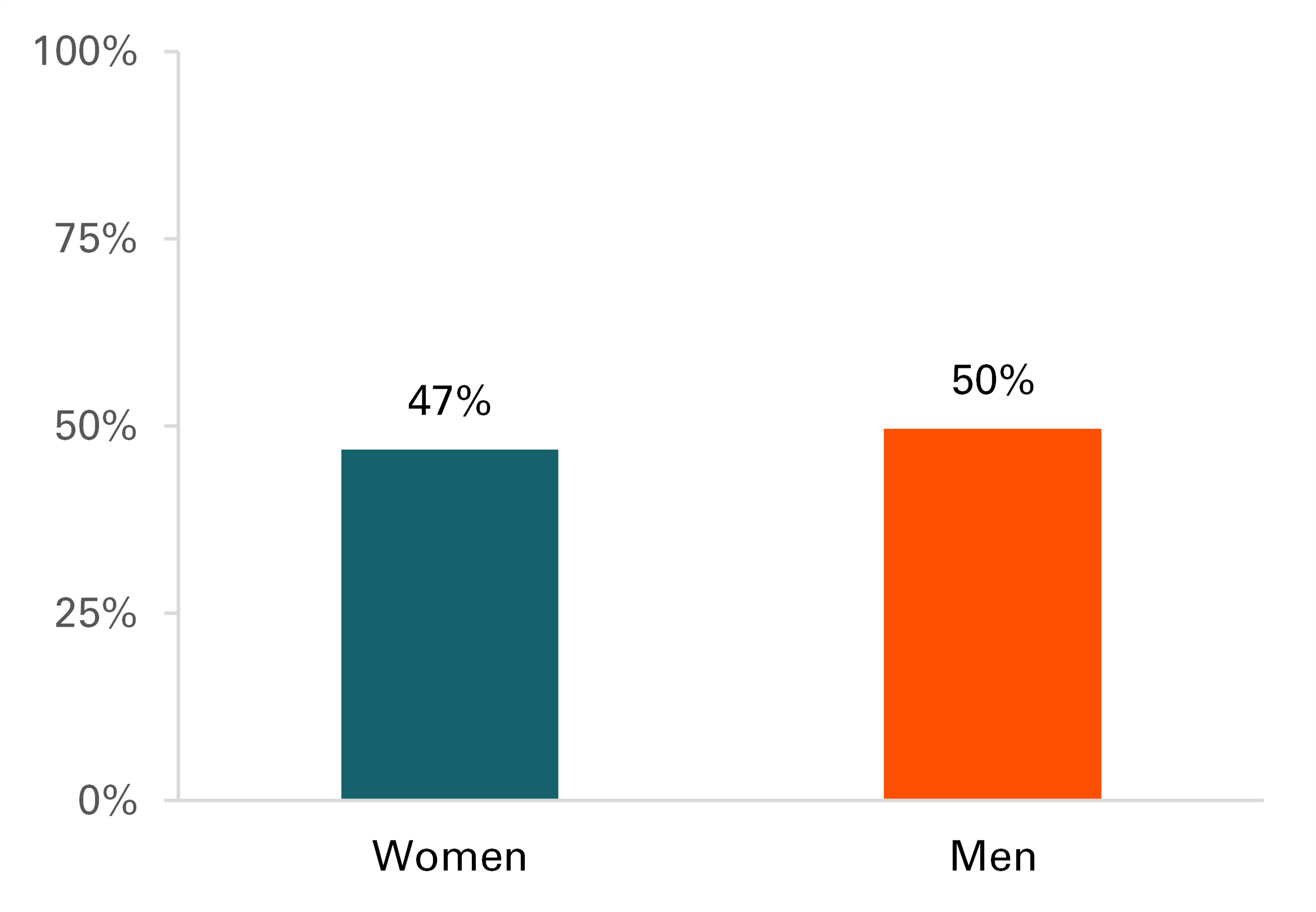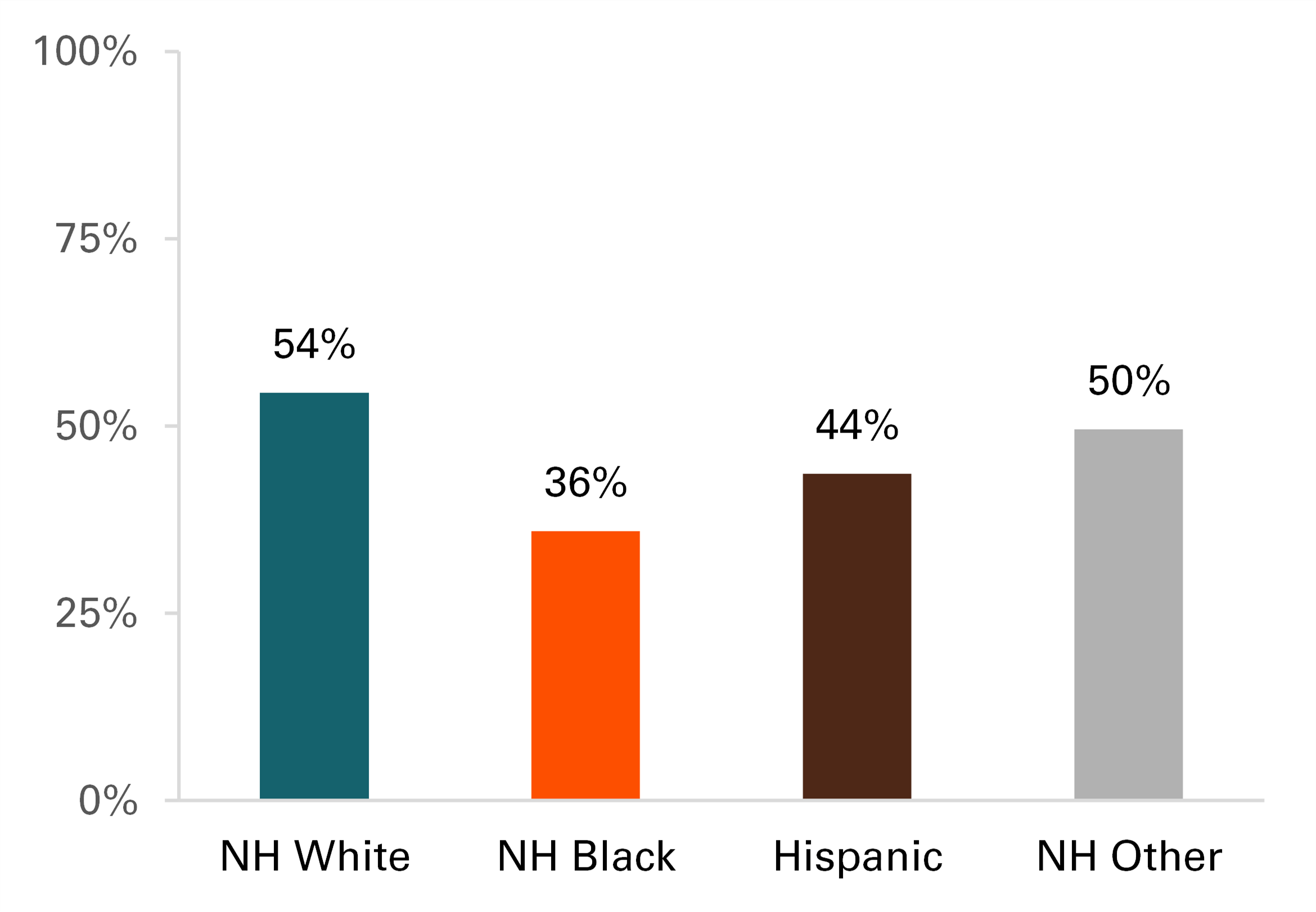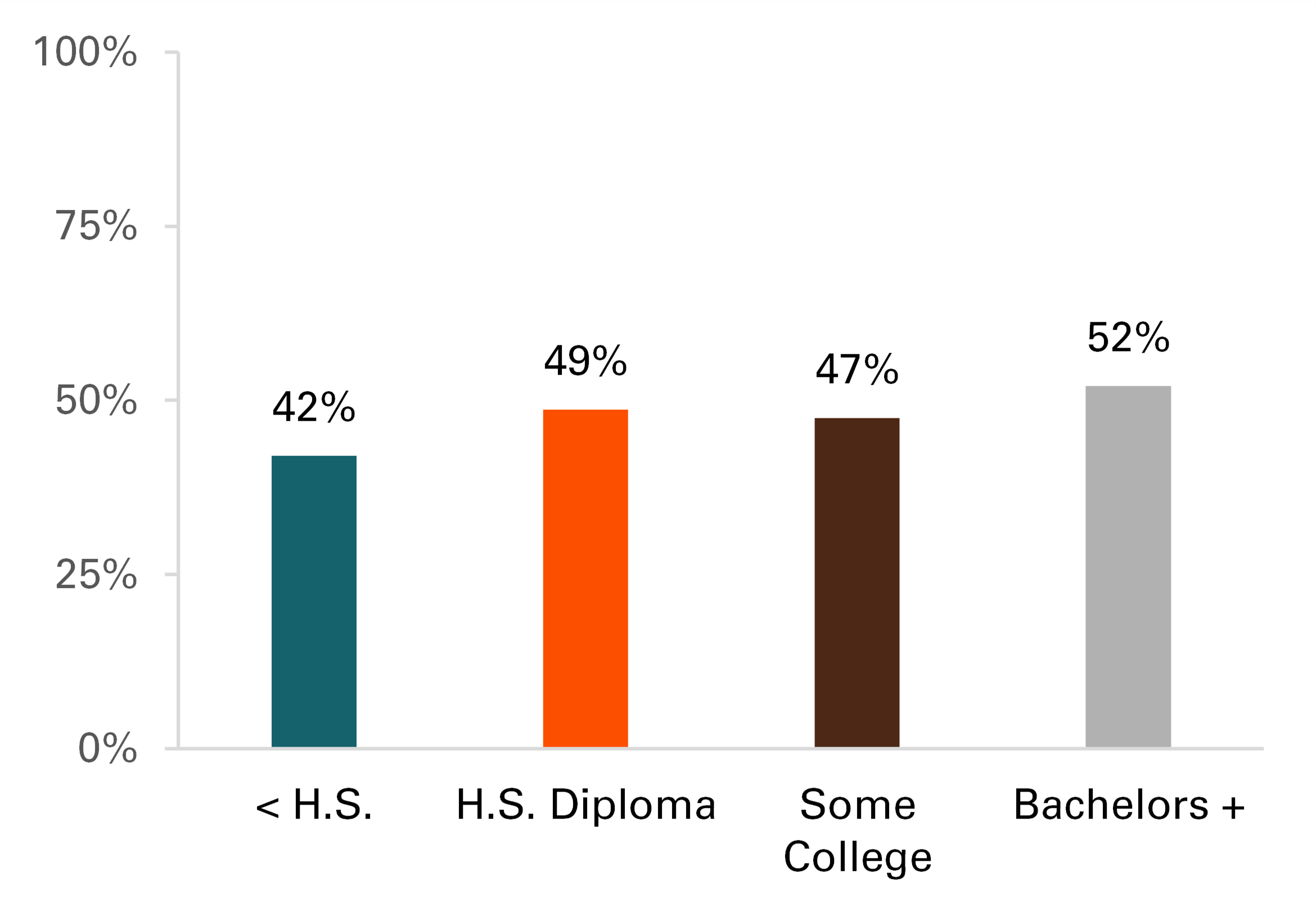Homeownership Among Never Married Adults, 2021
Family Profile No. 14, 2023
Author: Francesca A. Marino
The percentage of all U.S. adults who have never been married or have yet to marry has doubled from 15% in 1960 to 31% in 2020 (Marino, 2023). More recently, the national homeownership rate declined from about 67% in 2006 to 64% in 2019 (Mateyka & Mazur, 2021). Homeownership rates for never married adults declined from 2005 to 2013, and single adults had lower shares of homeownership than currently and previously married adults (Mundra & Uwaifo Oyelere, 2019). Further, homeownership among never married adults tended to vary by gender, race, and education level (Mundra & Uwaifo Oyelere, 2019). Home prices have risen nearly 30% since 2019 (National Association of Realtors, 2022), underscoring the salience of assessing the potential impact of this rapid increase on the growing never married population. This family profile examines the percentages of homeowners across marital status using the 2021 American Community Survey 1-year estimates, and also illustrates differentials in homeownership among never married adults (aged 18 and older) by gender, race and ethnicity, and educational attainment.
Homeownership Across Marital Status, 2021
- The percentage of homeowners was greatest among married adults, with 80% owning a home.
- Followed by married adults, widowed individuals had the next highest share of homeownership at 71%.
- About three-fifths (59%) of divorced adults reported they owned a home in 2021.
- The lowest share of homeownership among all marital statuses was among those who reported that they were never married or had yet to be married. Never married homeowners comprised less than half (48%) of the never married population.
Figure 1. Homeownership Across Marital Status, 2021

Percentage of Never Married Homeowners by Gender, 2021
- Among never married men, half (50%) owned a home, whereas a slightly lower percentage of never married women were homeowners in 2021 (47%).
Figure 2. Percentage of Never Married Homeowners by Gender, 2021


"Never married homeowners comprised less than half (48%) of the never married population.’’

Percentage of Never Married Homeowners by Race & Ethnicity, 2021
- Over half of non-Hispanic White adults who reported that they were never married or had yet to marry (54%) owned a home in 2021. This is the highest share of homeownership among never married adults across all racial and ethnic groups.
- Of those who were never married and identified as non-Hispanic Other, half owned a home (50%).
- About 44% of Hispanic adults who had never married were homeowners.
- The lowest share of homeowners who were never married across all racial and ethnic groups were non-Hispanic Black adults, at 36%. This is nearly a 20% difference from the group with the highest share of homeownership among never married adults, non-Hispanic Whites.
Figure 3. Percentage of Never Married Homeowners by Race & Ethnicity, 2021

Percentage of Never Married Homeowners by Educational Attainment, 2021
- The highest share of homeownership among never married adults across all education levels was among those with a bachelor’s degree or higher. They are the only group to have over half (52%) who reported they owned a home in 2021.
- Among never married adults with a high school diploma, 49% were homeowners. The share among those with at least some college education was slightly lower than those with a high school diploma, at 47%.
- The lowest share of homeownership across educational attainment groups was among those who had not received a high school diploma (42%).
Figure 4. Percentage of Never Married Homeowners by Educational Attainment, 2021

Data Source:
Ruggles, S., Flood, S., Sobek, M., Brockman D., Cooper, G., Richards, S., Schouweiler, M. (2023). IPUMS USA: Version 13.0 [dataset]. Minneapolis, MN: IPUMS. https://doi.org/10.18128/D010.V12.0
References:
Marino, F. A. (2023). Unmarried adulthood: More than a century of change, 1900-2020. Family Profiles, FP-23-04. National Center for Family & Marriage Research. https://doi.org/10.25035/ncfmr/fp-23-04
Mateyka, P. J., Mazur, C. R., American Community Survey (U.S.), & U.S. Census Bureau. (2021). Homeownership in the United States: 2005 to 2019. ( No. ACSBR-010.;ACSBR/010.;). Washington, D.C.: U.S. Department of Commerce, U.S. Census Bureau.
Mundra, K., & Uwaifo Oyelere, R. (2019). Homeownership trends among the never married. Housing Studies, 34(1), 162-187. https://doi.org/10.1080/02673037.2018.1442562
National Association of Realtors. (2022, February 7). The “Double Trouble” of the Housing Market. National Association of Realtors. https://cdn.nar.realtor//sites/default/files/documents/2022-the-double-trouble-of-the-housing-market-02-07-2022.pdf
Suggested Citation:
Marino, F. A. (2023). Homeownership among never married adults, 2021. Family Profiles, FP-23-14. National Center for Family & Marriage Research. https://doi.org/10.25035/ncfmr/fp-23-14
Updated: 11/10/2025 04:30PM


